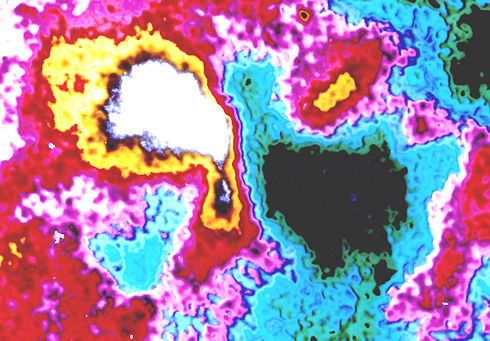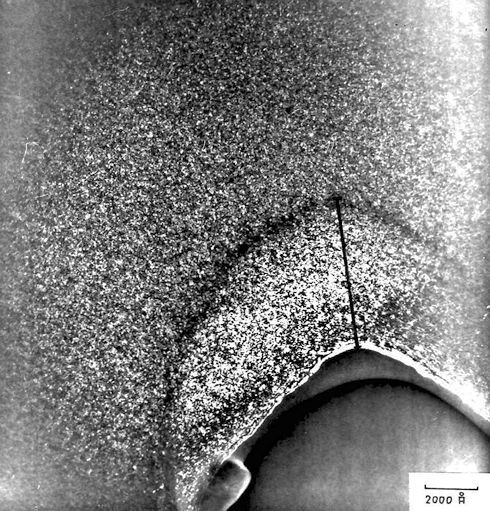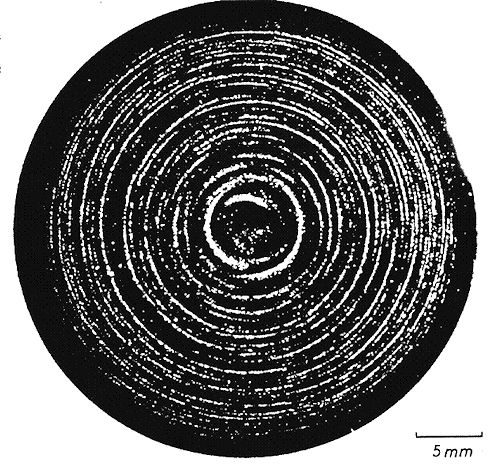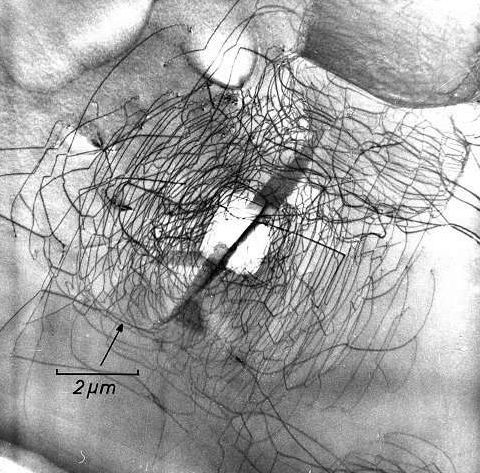1.2 Overview of Content
1.2.1. : Early TEM Work in Stuttgart
Electron Microscope Investigation of the Damage in Cobalt Single Crystals Introduced by Ion Irradiation
Bombard Co specimen already prepared for Transmission Electron Microscopy (TEM) with gold ions having an energy around 60 keV and then use a TEM to see what kind of damage that produced.
Straight forward except for:
- Specimen preparation was more tricky then envisioned. You also learn that TEM work is 90 % specimen preparation and not looking on some screen.
- Co is ferromagnetic and thus disturbs the magnetic field of the objective lens. That needs major realignments of the instrument (especially astigmatism) and makes it hard to obtain good crisp pictures.
- The damage produced (small dislocation loops) is too small to be seen directly with the 1970th TEMs. You thus produced "black-white contrasts" that gave indirect images and needed major theory for interpretation.
 |


